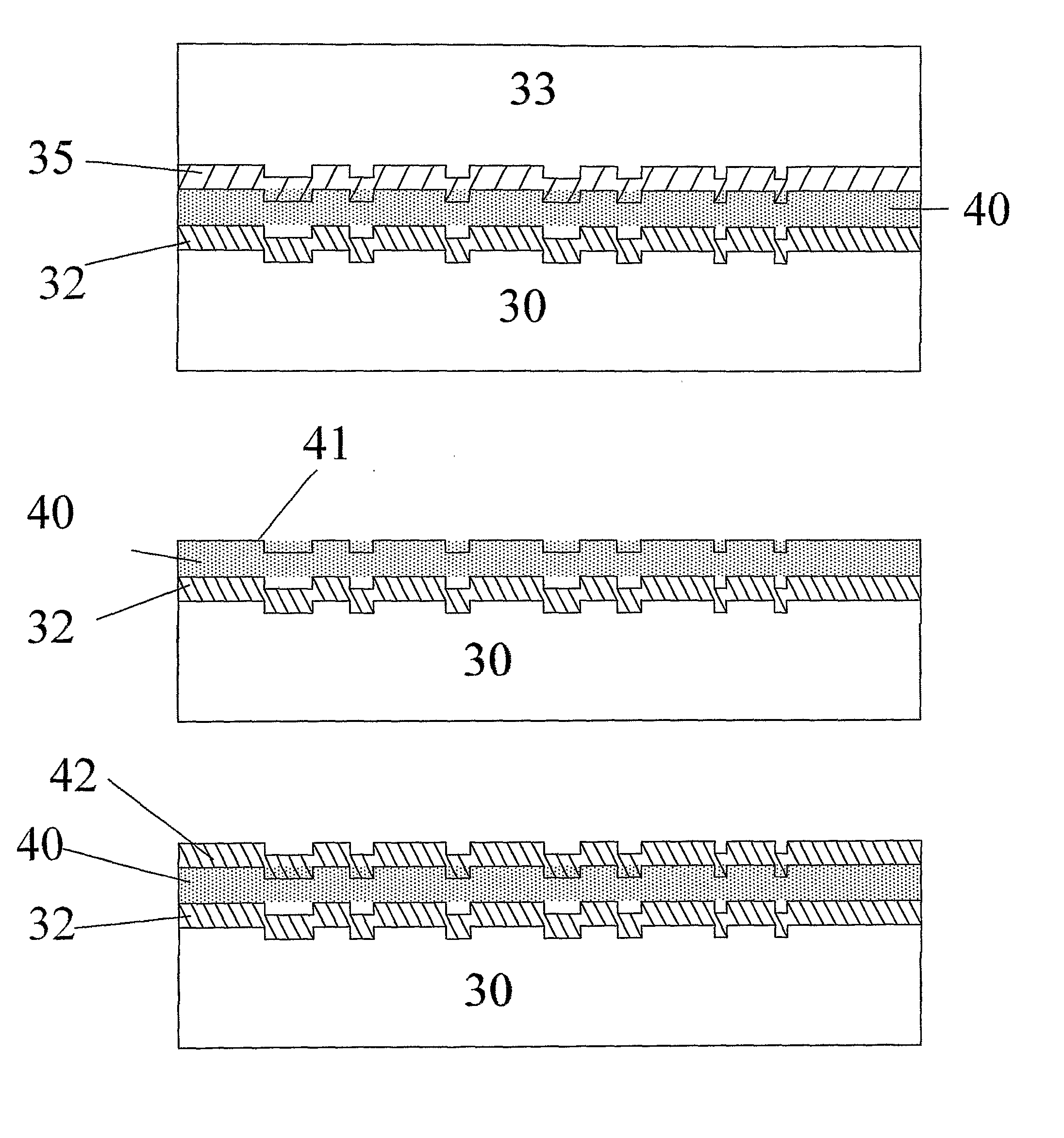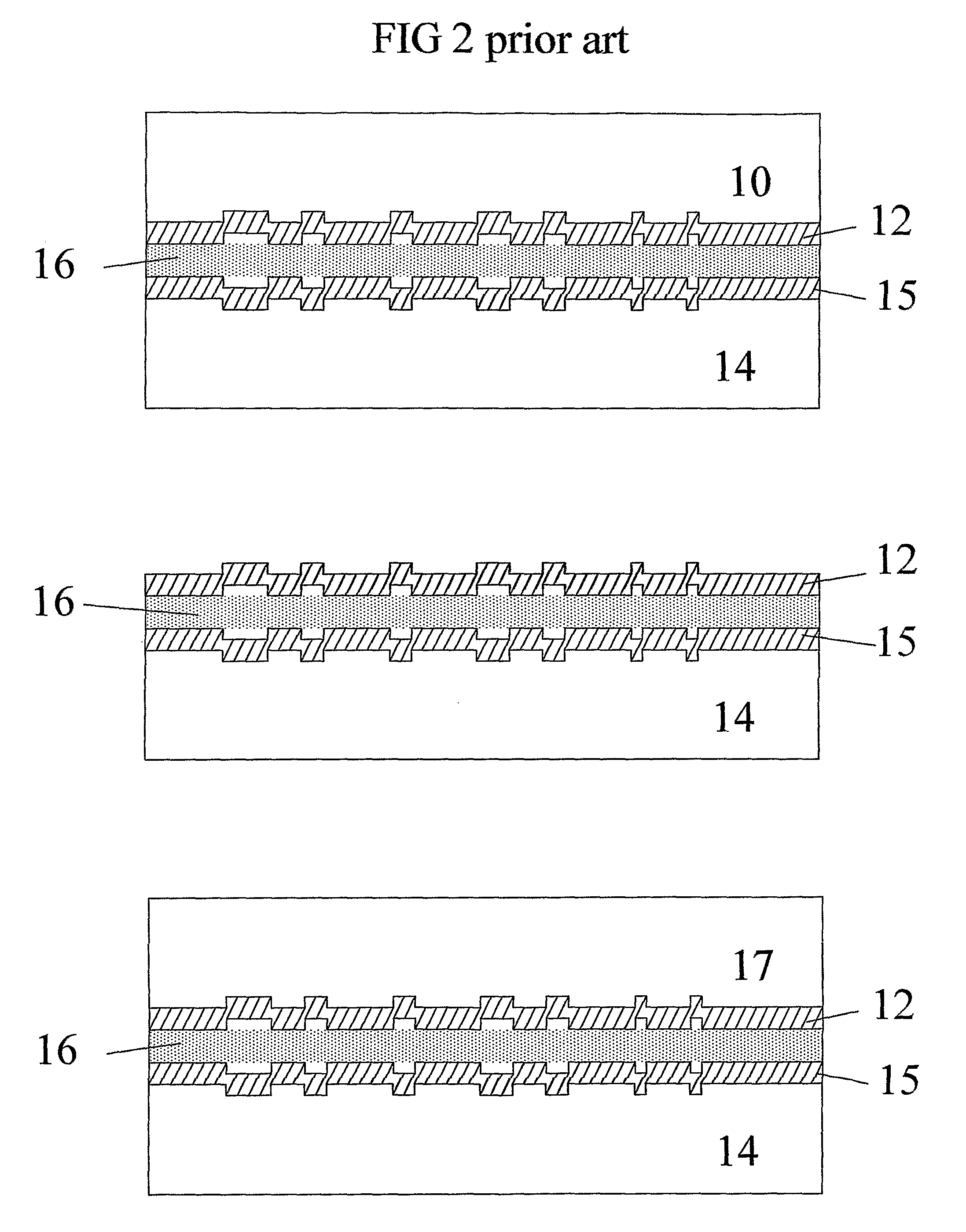Multilayer Optical Disc and Method and Apparatus For Making Same
a multi-layer, optical disc technology, applied in the field of information storage devices, can solve the problems of low output of valid discs connected with a high degree of faultiness, all the prior systems used to be very complicated, and the chance of further breaking or deforming the data layer, and achieve the effect of high recording density
- Summary
- Abstract
- Description
- Claims
- Application Information
AI Technical Summary
Benefits of technology
Problems solved by technology
Method used
Image
Examples
example 1
[0050] The method of sputtering of DLC layer. 10 substrates with diameter 120 mm, thickness 0.54 mm made out of polycarbonate by injection molding and containing data in form of pits 0.12 μm deep, are placed on the low electrode of the Plasma Enhanced Chemical Vapor Deposition plant of condenser type, the temperature of which is maintained substantially 30° C. using built-in thermostat. Constant-temperature of electrode is needed for keeping substrates from possible fluctuations and overheating while they are being sputtered, which can cause heterogeneous sputtering. A layer of diamond-like carbon (DLC) is deposited on the substrate under the following conditions: reaction chamber gets vapors of acetonitril 1.5 lph, argon 1 lph, with vacuum 20 Pa, generator power is 500 Watt, frequency of generator work is 400 kHz. Time of sputtering is 6 min. In industrial setup the same effects and much faster are achieved by application of sputtering machines.
example 2
[0051] The method of producing plastic matrix. Polycarbonate substrate, made by injection molding, containing data in the form of micro-bumps of 0.12 μm high (made using metal stamper—“mother”) is placed on the lower thermo stated electrode of the reaction chamber in PEVCD plant, then it is being spattered by SiO2 under the following conditions: the reaction chamber gets vapors of hexamethyldisilazane 0.9 lph, argon 1.0 lph and oxygen 1.5 lph, with pressure in the chamber of 25 Pa and power 300 Watt for 1 hour the sputtering of SiO2 is being carried out. Then the substrate is processed by liquid dimethyldichloresilane for 15 sec, after that the surplus of the later is removed in spin dryer and surface is washed by isopropyl alcohol. The matrix is ready for further use.
example 3
[0052] In the DVD-bonding machine the substrate with sputtered layer of DLC (the first data layer) similar to example 1 is stuck with plastic matrix with data of the second layer, produced according to example 2. The thickness of the glue layer is set to be 35-40 μm. 30 min after gluing the disk is divided into layers and the data relief from plastic matrix is carried to substrate with sputtered DLC, moreover plastic matrix is released, and then this matrix can be used again for producing the next disk. To remove electrostatic stress surfaces of substrate and matrix are washed by isopropyl alcohol. On the produced half-finished product of two-layer disk according to method sited in example 1, the second coating of DLC is sputtered and then it is stuck by DVD-bonding machine with the plastic matrix bearing information of the third layer. After separating the produced half-finished disk is washed by isopropyl alcohol and stuck with a blank polycarbonate substrate in DVD bonding machin...
PUM
 Login to View More
Login to View More Abstract
Description
Claims
Application Information
 Login to View More
Login to View More - R&D
- Intellectual Property
- Life Sciences
- Materials
- Tech Scout
- Unparalleled Data Quality
- Higher Quality Content
- 60% Fewer Hallucinations
Browse by: Latest US Patents, China's latest patents, Technical Efficacy Thesaurus, Application Domain, Technology Topic, Popular Technical Reports.
© 2025 PatSnap. All rights reserved.Legal|Privacy policy|Modern Slavery Act Transparency Statement|Sitemap|About US| Contact US: help@patsnap.com



